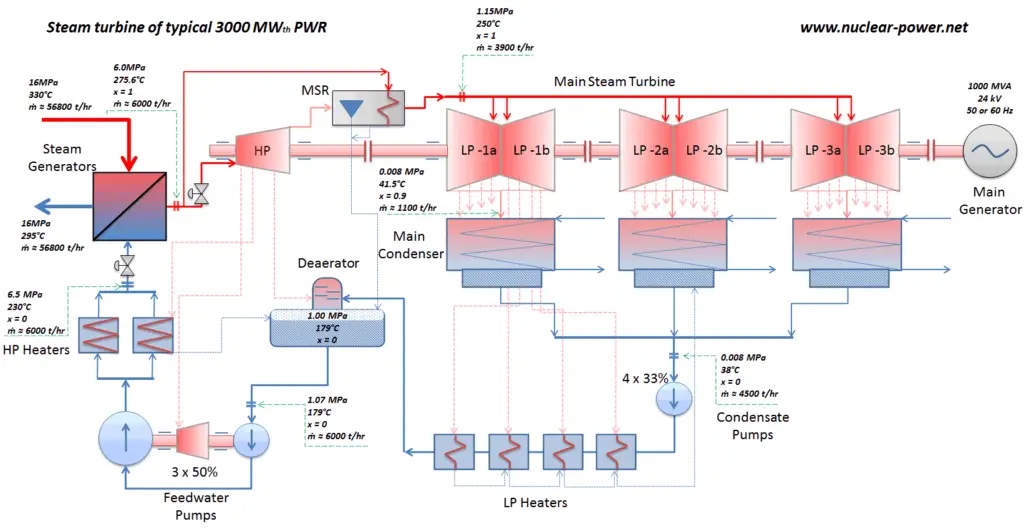Turbine Trip
Every steam turbine is also provided with emergency governors which come into action under specific conditions. In general, an unplanned or emergency shutdown of a turbine is known as a “turbine trip”. The turbine trip signal initiates fast closure of all steam inlet valves (e.g. turbine stop valves – TSVs) to block steam flow through the turbine.
The turbine trip event is a standard postulated transient, which must be analyzed in the Safety Analysis Report (SAR) for nuclear power plants.
In a turbine trip event, a malfunction of a turbine or reactor system causes the turbine to trip off the line by abruptly stopping steam flow to the turbine. The common causes for a turbine trip are for example:
- the speed of the turbine shaft increases beyond specific value (e.g. 110%) – turbine overspeed
- balancing of the turbine is disturbed or due to high vibrations
- failure of the lubrication system
- low vacuum in the condenser
- manual emergency turbine trip
Following a turbine trip, the reactor is usually tripped directly from a signal derived from the system. On the other hand, the reactor protection system initiates a turbine trip signal whenever reactor trip occurs. Since there remains still energy in the nuclear steam supply system (NSSS), the automatic turbine bypass system will accommodate the excess steam generation.

We hope, this article, Turbine Trip, helps you. If so, give us a like in the sidebar. Main purpose of this website is to help the public to learn some interesting and important information about thermal engineering.